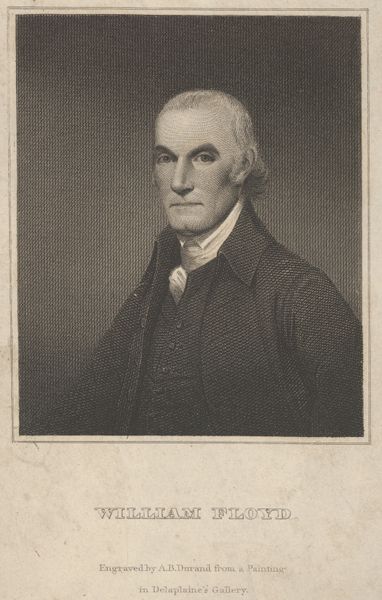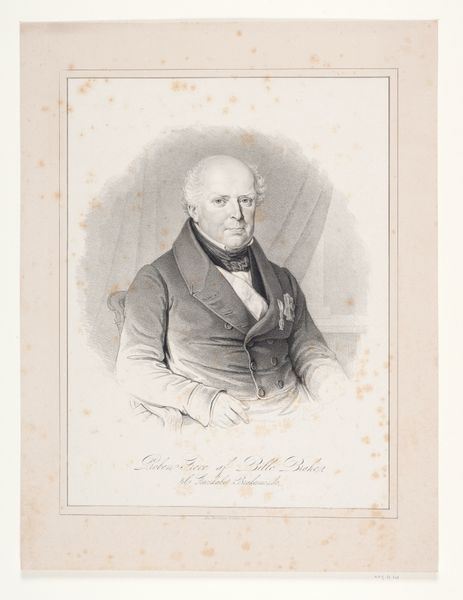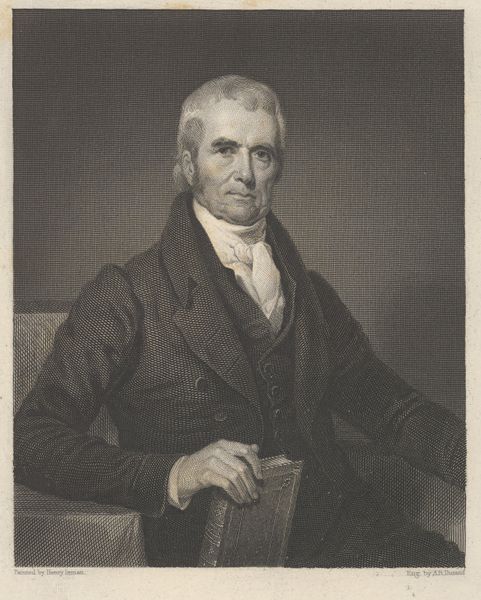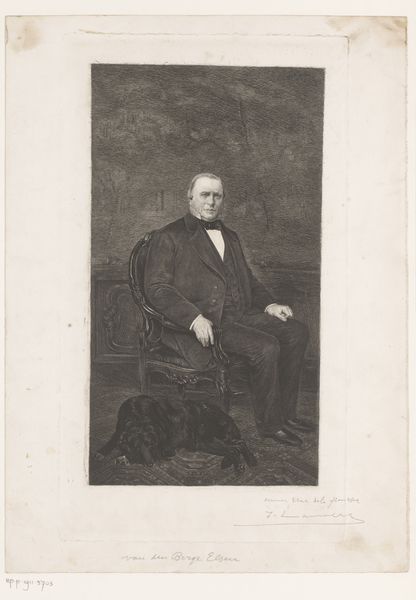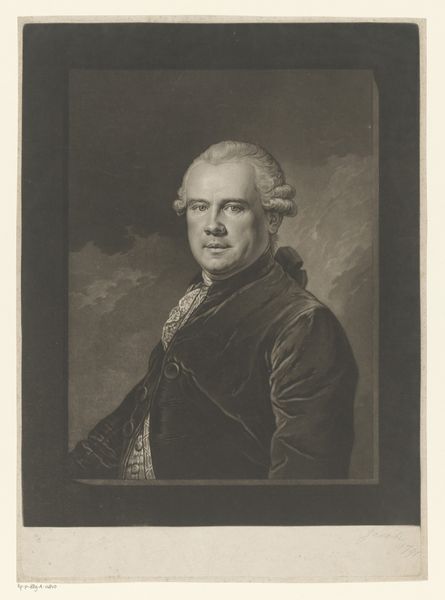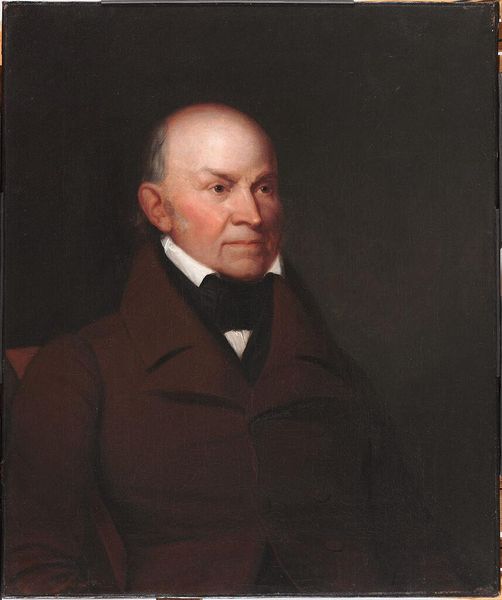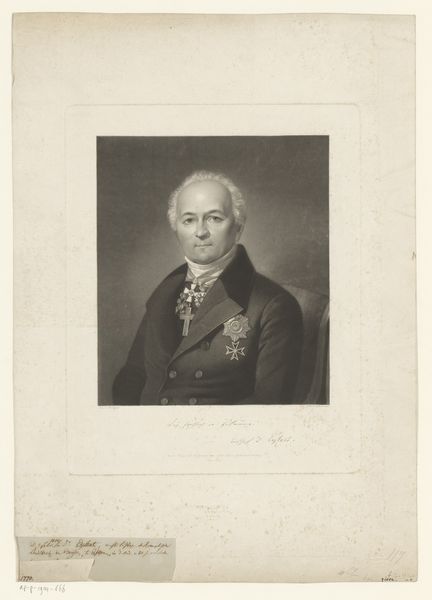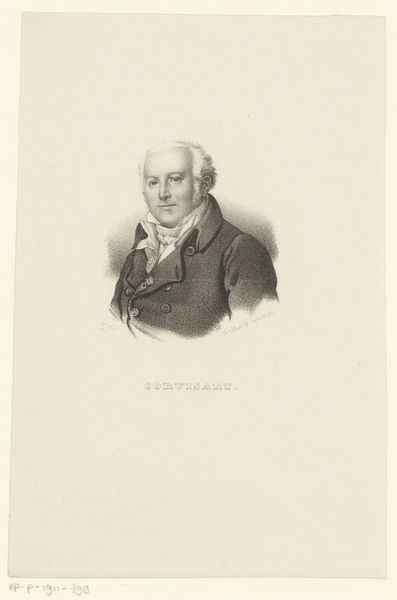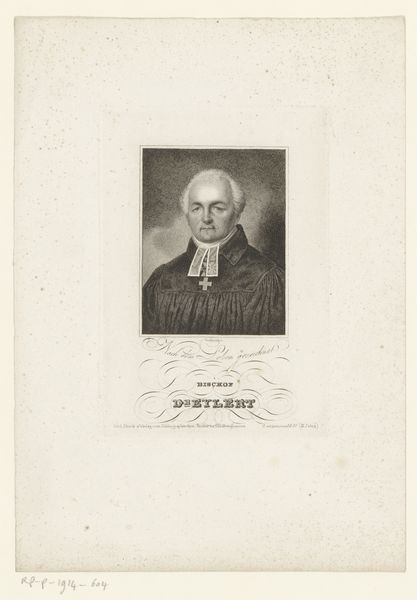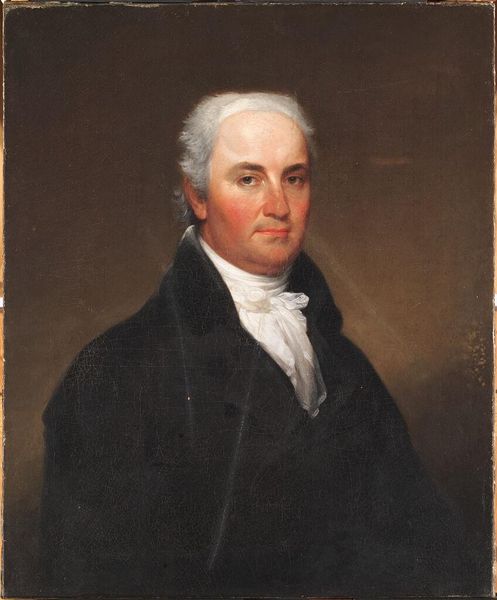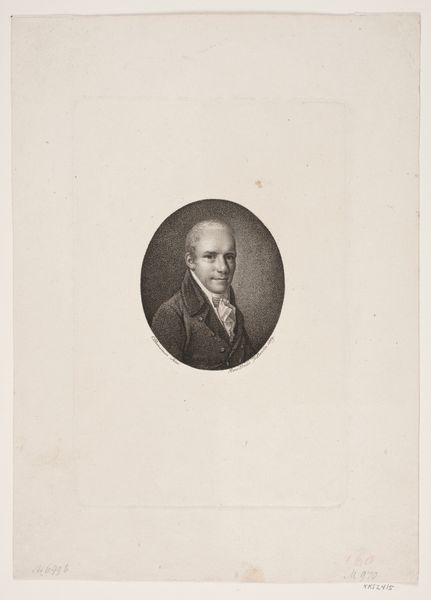
drawing, print, engraving
#
portrait
#
drawing
#
neoclassicism
# print
#
men
#
portrait drawing
#
history-painting
#
engraving
Dimensions: image: 12 5/16 x 9 13/16 in. (31.3 x 24.9 cm) sheet: 16 15/16 x 12 5/16 in. (43 x 31.2 cm)
Copyright: Public Domain
Editor: So, here we have Asher Brown Durand's portrait of John M. Mason from 1822. It's an engraving, and something about the detail feels so formal and reserved. What do you make of it? Curator: It strikes me as a conversation between power and vulnerability. The very tight engraving, the somewhat severe composition, certainly speak to the sitter's status – someone important enough to be immortalized in this way. But look at Mason's eyes. Do you see a certain melancholy there, perhaps even a hint of doubt? Editor: I do see that. The gaze is intense, almost unsettling. Is that a common trait of portraits from this era, revealing more than just social standing? Curator: Absolutely! Neoclassical portraits often grappled with the inner lives of their subjects, even within the constraints of formal representation. It was as if artists were trying to reconcile the stoicism of the classical world with the burgeoning romantic interest in individual emotion. Can you feel the tension? Editor: Yes, now that you point it out, it's like a battle between his inner thoughts and the public image he’s presenting. I’m also curious about the medium itself. Why engraving? Curator: Engraving allowed for the wide dissemination of images, especially portraits. It democratized representation, in a way, making the likenesses of prominent figures available to a broader audience. It's not just art; it’s an act of historical distribution. Editor: I never considered that. Seeing it as a form of early mass media shifts my perspective completely. It’s like the 19th-century equivalent of a celebrity profile! Curator: Precisely! And thinking about the circulation adds another layer to how we read Mason's expression. Knowing his face would be widely seen, how does that impact your view of the work now? Editor: Well, the sense of formality now feels more calculated. Perhaps it was strategic image-making, crafted to resonate with an audience hungry for strong, yet relatable figures. Thanks, I wouldn't have seen it that way without your insight. Curator: My pleasure. Isn’t it wonderful when art whispers its secrets across the ages? It certainly leaves one contemplating the narratives we weave around identity, both then and now.
Comments
No comments
Be the first to comment and join the conversation on the ultimate creative platform.
